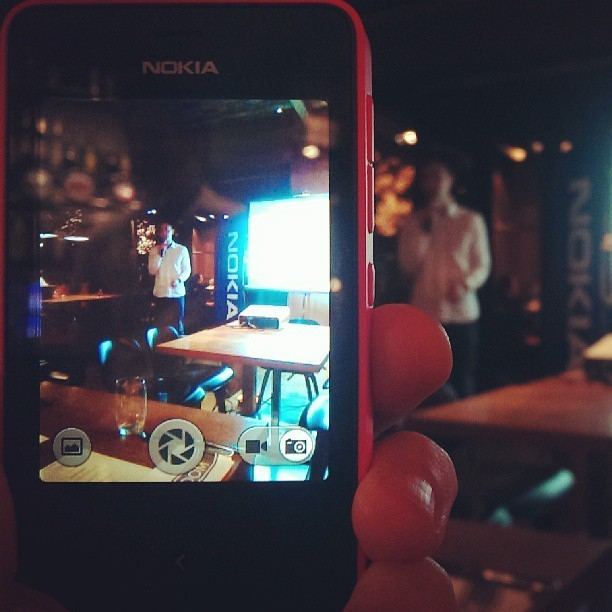Working state Discontinued Initial release May 9, 2013 | Source model Closed source Latest release Asha Platform 1.4.0.6 | |
 | ||
OS family | ||
The Nokia Asha platform is a mobile operating system (OS) and computing platform designed for low-end borderline smartphones, based on software from Smarterphone which was acquired by Nokia. The platform inherits UI similarities from Symbian, Maemo and MeeGo, and replaces Series 40 on Nokia's low-end devices. The user interface design team was headed by Peter Skillman, who had worked previously on webOS and the design of MeeGo for the Nokia N9.
Contents
It is the successor to the Meltemi project which Nokia was developing as a Linux platform to replace Series 40, but was cancelled in July 2012.
The first phone based on the platform is the Nokia Asha 501, and were followed by the Asha 500, Asha 502 Dual SIM, and Asha 503, all announced at Nokia World in October 2013. Another phone, the Nokia Asha 230 was announced on February 24, 2014, comes pre-installed with Asha platform 1.4.
Apps for the platform are either made using Java ME, or as web apps, which are rendered by the Nokia Xpress browser which uses the Gecko rendering engine. The mobile operating system lacks true multitasking but the radio and music app can run in background mode (which is advertised as multitasking), while swiping to fastlane apps will actually close down previously opened applications instead of minimizing them.
It features a notification centre, named Fastlane, which is accessible by swiping to the left of the home screen.
The platform is supplemented by the Nokia X software platform, Nokia's customised version of Android, seen on the Nokia X, which draws cues from the Asha platform, including the Fastlane notification centre.
In a company memo released in July 2014, it was announced that as part of cutbacks, Microsoft would end the Asha, Series 40, and X range entirely, in favor of solely producing and encouraging the use of Lumia Windows Phone products.
Asha Platform 1.0
Java APIs: HERE API, Nokia Gesture API, Nokia Frame Animator API,
File Selection API, Image Scaling API, Network State API, Contact API, Phone Settings API,
JSR 172 (Web Services), JSR 177 (Security and Trust), JSR 179 (Location), JSR 211 (Content Handler), JSR 234 (Multimedia Supplements), JSR 256 (Mobile Sensor API), JSR-238 (Mobile Internationalization), JSR 75 (File and PIM), JSR 82 (Bluetooth), JSR 118 (MIDP 2.1), JSR 135 (Mobile Media), JSR 139 (CLDC 1.1), JSR 184 (3D Graphics), JSR 205 (Messaging), JSR 226 (Vector Graphics),
Supported models: Nokia Asha 501
Asha Platform 1.1
Features (new compared to 1.0): WhatsApp, easy capture and share videos, Microsoft Exchange ActiveSync, VoIP and Fastlane is more personalised and more closely integrated with your social networks.
Java APIs (new compared to 1.0): Share API, VoIP API
Supported models: Asha 500, Asha 502 Dual SIM and Nokia Asha 501 with a firmware update to 11.1.1
Asha Platform 1.2
Features (new compared to 1.1): 3G
Java APIs (new compared to 1.1): none
Supported models: Asha 503
Reception
The Verge commented that the platform may be a recognition on the part of Nokia that they are unable to move Windows Phone into the bottom end of smartphone devices and may be "hedging their commitment" to the Windows Phone platform.
Competition
The Asha Platform's main competition is Firefox OS, and Samsung's Java-based REX platform; both of which are also optimised for low-end handsets. Furthermore, entry-level Android handsets are also competition to the platform.
